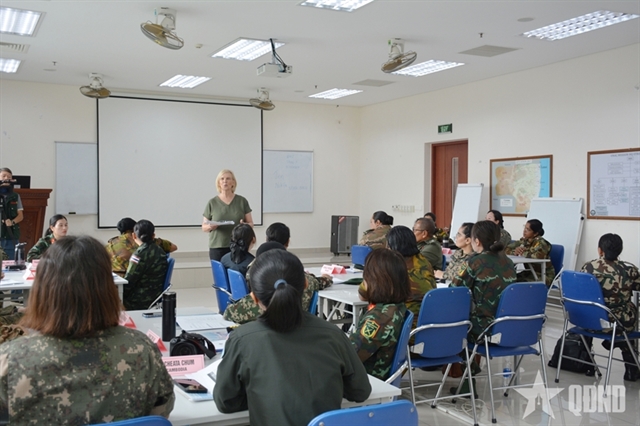Global Recommendations on Physical activity for Health
Regular physical activity helps to maintain a healthy body
Physically active persons:
- have lower rates of: coronary heart disease, high blood pressure, stroke, diabetes, colon and breast cancer, and depression;
- have a lower risk of falling and of hip or vertebral fractures;
- are more likely to maintain their weight.
Physical activity should not be mistaken for sport
Physical activity is any bodily movement produced by the skeletal muscles that uses energy. This includes sports, exercise and other activities such as playing, walking, doing household chores, gardening, and dancing.
Both moderate and vigorous intensity physical activity bring health benefits
Intensity refers to the rate at which the activity is being performed. It can be thought of as "how hard a person works to do the activity".
The intensity of different forms of physical activity varies between people. Depending on an individual's relative level of fitness, examples of moderate physical activity could include: brisk walking, dancing or household chores. Examples of vigorous physical activity could be: running, fast cycling, fast swimming or moving heavy loads.
These recommendations are relevant to all healthy adults
Unless specific medical conditions indicate the contrary, these recommendations apply to all people, irrespective of gender, race, ethnicity or income level. They also apply to individuals with chronic noncommunicable conditions, not related to mobility, such as hypertension or diabetes. These recommendations can be valid for adults with disabilities as well.
Doing some physical activity is better than doing none
Inactive people should start with small amounts of physical activity and gradually increase duration, frequency and intensity over time. Inactive adults, older adults and those with disease limitations will have added health benefits when they become more active.
Pregnant, postpartum women and persons with cardiac events may need to take extra precautions and seek medical advice before striving to achieve the recommended levels of physical activity.
Supportive environments and communities may help people to be more physically active
Urban and environmental policies can have huge potential to increase the physical activity levels in the population. Examples of these policies include: ensuring that walking, cycling and other forms of active transportation are accessible and safe for all; or that schools have safe spaces and facilities for students to spend their free time actively.
For children and young people, physical activity includes play,games, sports, transportation, chores, recreation, physical education, or planned exercise, in the context of family, school, and community activities. In order to improve cardiorespiratory and muscular fitness, bone health, and cardiovascular and metabolic health biomarkers:
Children and youth aged 5–17 should accumulate at least 60 minutes of moderate-intensity aerobic physical activity throughout the week or do at least 75 minutes of vigorous-intensity aerobic physical activity throughout the week or an equivalent combination of moderate- and vigorous-intensity activity.
Aerobic activity should be performed in bouts of at least 10 minutes duration.
For additional health benefits, adults should increase their moderate-intensity aerobic physical activity to 300 minutes per week, or engage in 150 minutes of vigorous-intensity aerobic physical activity per week, or an equivalent combination of moderate- and vigorous-intensity activity.
Muscle-strengthening activities should be done involving major muscle groups on 2 or more days a week.
Age group: 18-64 years old
In adults aged 18–64, physical activity includes leisure time physical activity, transportation (e.g. walking or cycling), occupational (i.e. work), household chores, play, games, sports or planned exercise, in the context of daily, family, and community activities. In order to improve cardiorespiratory and muscular fitness, bone health, reduce the risk of NCDs and depression:
Adults aged 18–64 should do at least 150 minutes of moderate-intensity aerobic physical activity throughout the week or do at least 75 minutes of vigorous-intensity aerobic physical activity throughout the week or an equivalent combination of moderate- and vigorous-intensity activity.
Aerobic activity should be performed in bouts of at least 10 minutes duration.
For additional health benefits, older adults should increase their moderate-intensity aerobic physical activity to 300 minutes per week, or engage in 150 minutes of vigorous-intensity aerobic physical activity per week, or an equivalent combination of moderate-and vigorous-intensity activity.
Older adults, with poor mobility, should perform physical activity to enhance balance and prevent falls on 3 or more days per week.
Muscle-strengthening activities, involving major muscle groups, should be done on 2 or more days a week.
When older adults cannot do the recommended amounts of physical activity due to health conditions, they should be as physically active as their abilities and conditions allow.
Age group: 65 years old and above
In older adults aged 65 years and above, physical activity includes leisure time physical activity, transportation (e.g. walking or cycling), occupational (if the individual is still engaged in work), household chores, play, games, sports or planned exercise, in the context of daily, family, and community activities. In order to improve cardiorespiratory and muscular fitness, bone and functional health, reduce the risk of NCDs, depression and cognitive decline:
Older adults should do at least 150 minutes of moderate-intensity aerobic physical activity throughout the week or do at least 75 minutes of vigorous-intensity aerobic physical activity throughout the week or an equivalent combination of moderate- and vigorous-intensity activity.
Aerobic activity should be performed in bouts of at least 10 minutes duration.
For additional health benefits, older adults should increase their moderate-intensity aerobic physical activity to 300 minutes per week, or engage in 150 minutes of vigorous-intensity aerobic physical activity per week, or an equivalent combination of moderate-and vigorous-intensity activity.
Older adults, with poor mobility, should perform physical activity to enhance balance and prevent falls on 3 or more days per week.
Muscle-strengthening activities, involving major muscle groups, should be done on 2 or more days a week.
When older adults cannot do the recommended amounts of physical activity due to health conditions, they should be as physically active as their abilities and conditions allow.
WHO bulettin







